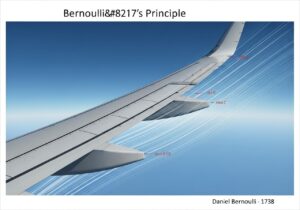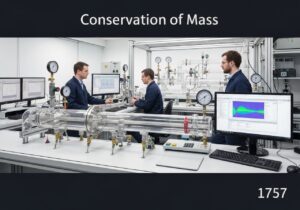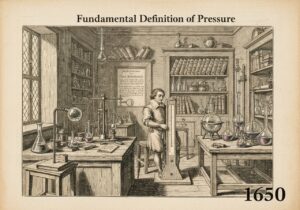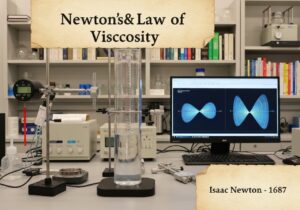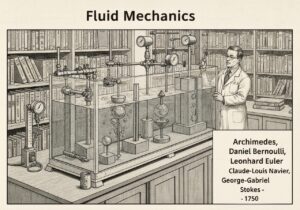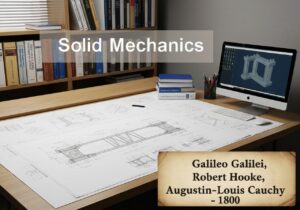Hydrostatic pression is the pressure exerted by a fluid at equilibrium at a given point within the fluid, due to the force of gravity. It increases in proportion to depth measured from the surface because of the increasing weight of fluid exerting downward force from above. The formula is [latex]p = \rho g h[/latex], where [latex]\rho[/latex] is the fluid density.
Hydrostatic Pressure
- Simon Stevin
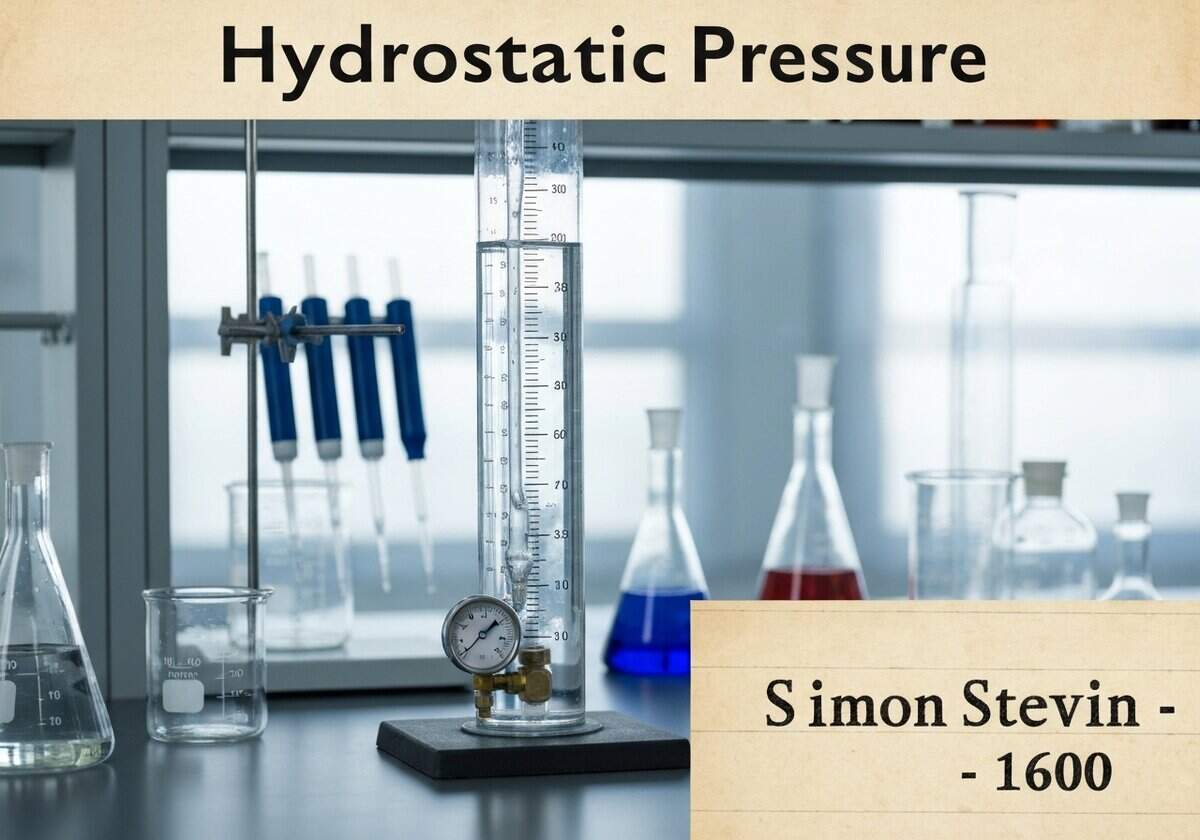
The principles of hydrostatic pressure were explored by Simon Stevin in the late 16th century, who demonstrated the hydrostatic paradox—that the pressure at the bottom of a container depends only on the height of the fluid, not the shape of the container or the total weight of the fluid. This concept was a significant advance from Archimedes’ earlier work on buoyancy. The formula [latex]p = \rho g h[/latex] quantifies this relationship, where [latex]p[/latex] is the hydrostatic pressure (gauge pressure, not including atmospheric pressure at the surface), [latex]\rho[/latex] is the fluid density, [latex]g[/latex] is the acceleration due to gravity, and [latex]h[/latex] is the height of the fluid column above the point of measurement. This linear relationship means that for every 10 meters of depth in water, the pressure increases by approximately one atmosphere. This has profound implications for deep-sea exploration, where submersibles must be engineered to withstand crushing forces. The same principle governs atmospheric pressure, although the calculation is more complex because air is a compressible gas, and its density ([latex]\rho[/latex]) is not constant with altitude. Hydrostatic equilibrium is a key concept in astrophysics, describing the balance between gravity pulling inward and a pressure gradient pushing outward that keeps stars and planets stable.
Type
Perturbation
Utilisation
Précurseurs
- Archimedes’ principle of buoyancy
- Euclidean geometry for calculating volumes and areas
- Early observations of fluid behavior in aqueducts and irrigation systems
Applications
- design of dams and levees
- submarine and submersible engineering
- atmospheric pressure modeling
- manometers and barometers for pressure measurement
- water tower design for municipal water supply
Brevets :
Innovations potentielles Idées
!niveaux !!! Adhésion obligatoire
Vous devez être membre de l'association pour accéder à ce contenu.
DISPONIBLE POUR DE NOUVEAUX DÉFIS
Ingénieur mécanique, chef de projet, ingénierie des procédés ou R&D
Disponible pour un nouveau défi dans un court délai.
Contactez-moi sur LinkedIn
Intégration électronique métal-plastique, Conception à coût réduit, BPF, Ergonomie, Appareils et consommables de volume moyen à élevé, Production allégée, Secteurs réglementés, CE et FDA, CAO, Solidworks, Lean Sigma Black Belt, ISO 13485 médical
Nous recherchons un nouveau sponsor
Votre entreprise ou institution est dans le domaine de la technique, de la science ou de la recherche ?
> envoyez-nous un message <
Recevez tous les nouveaux articles
Gratuit, pas de spam, email non distribué ni revendu
ou vous pouvez obtenir votre adhésion complète - gratuitement - pour accéder à tout le contenu restreint >ici<
Contexte historique
Hydrostatic Pressure
(si la date est inconnue ou n'est pas pertinente, par exemple "mécanique des fluides", une estimation arrondie de son émergence notable est fournie)
Invention, innovation et principes techniques connexes


